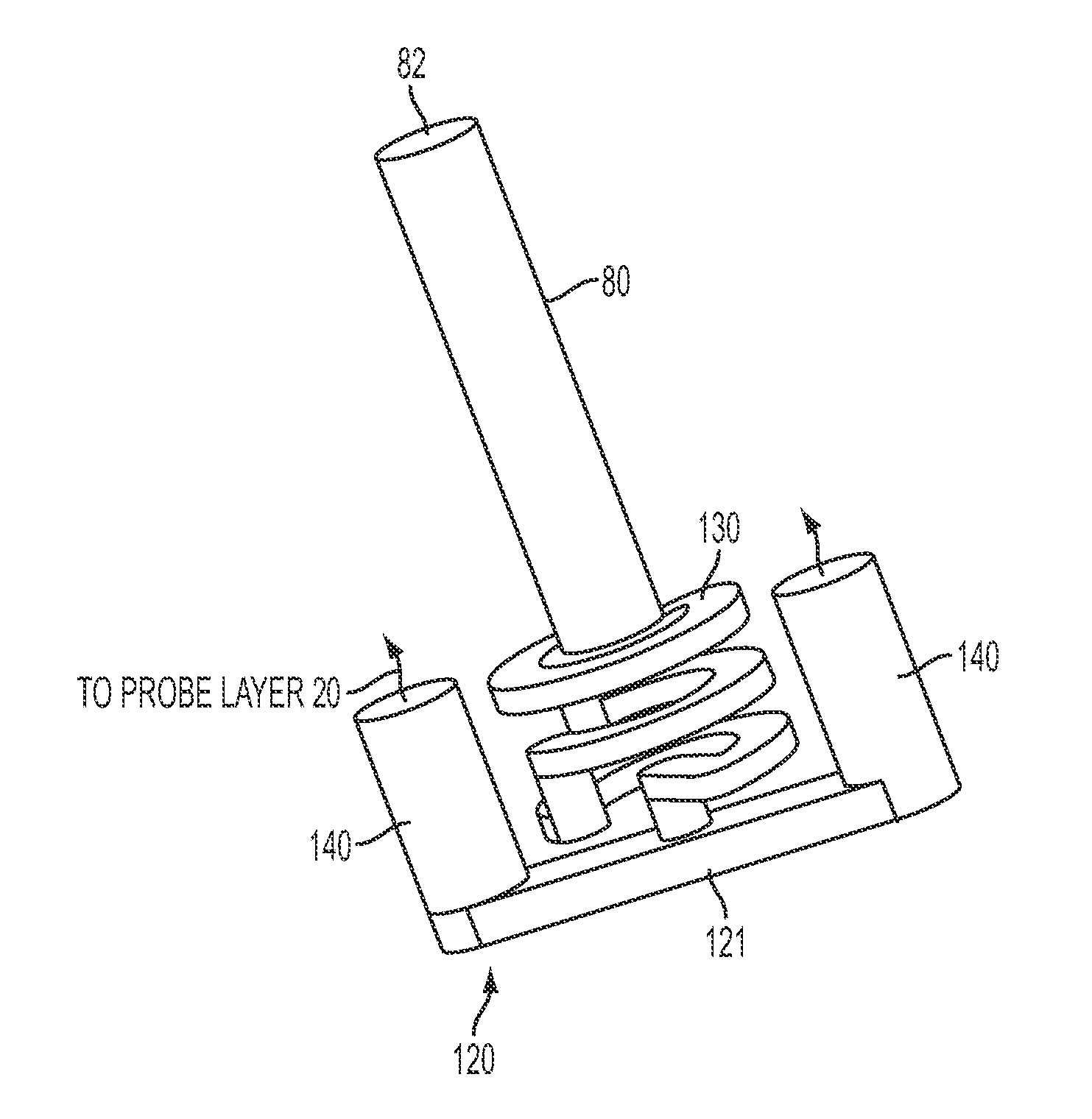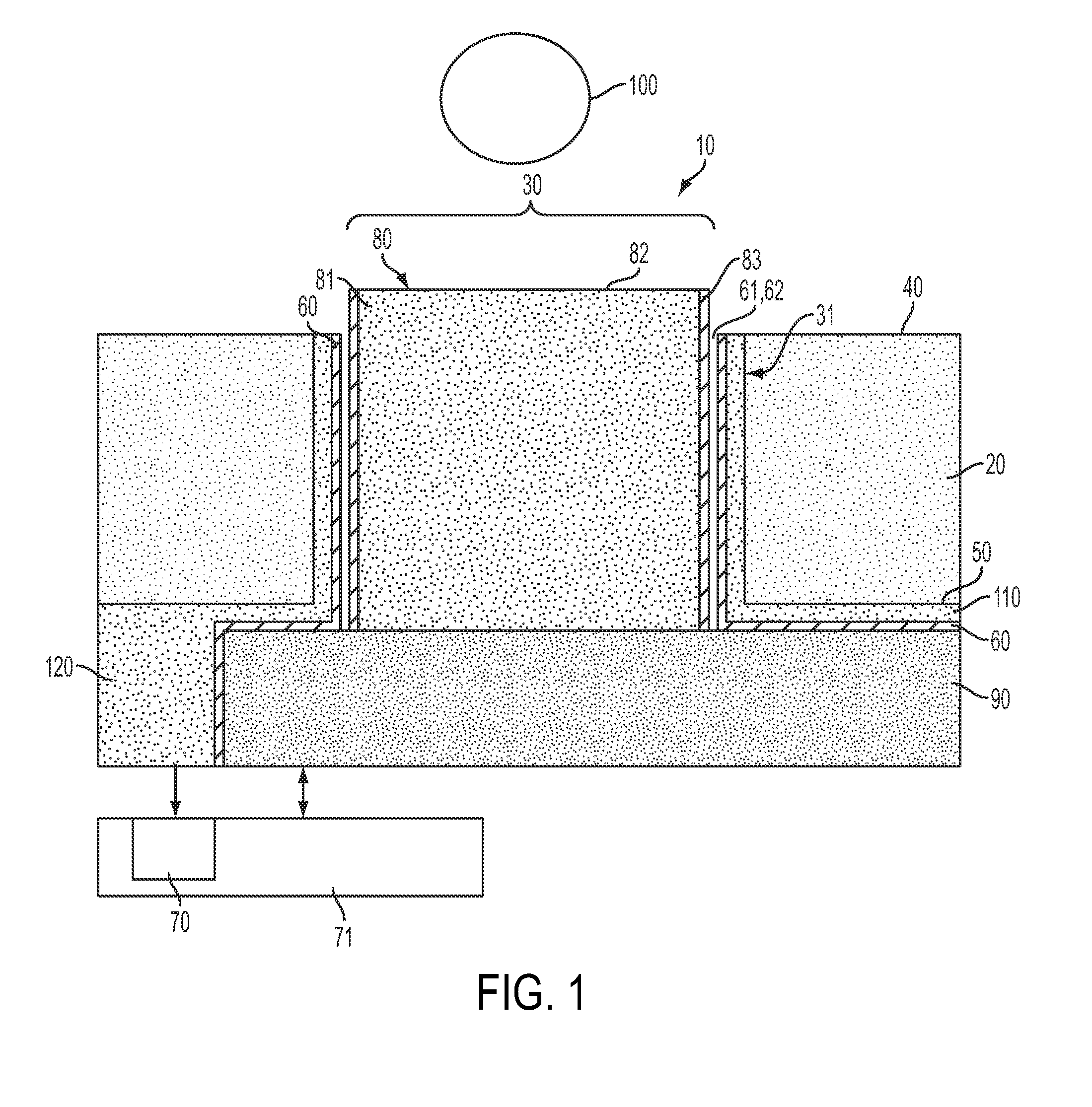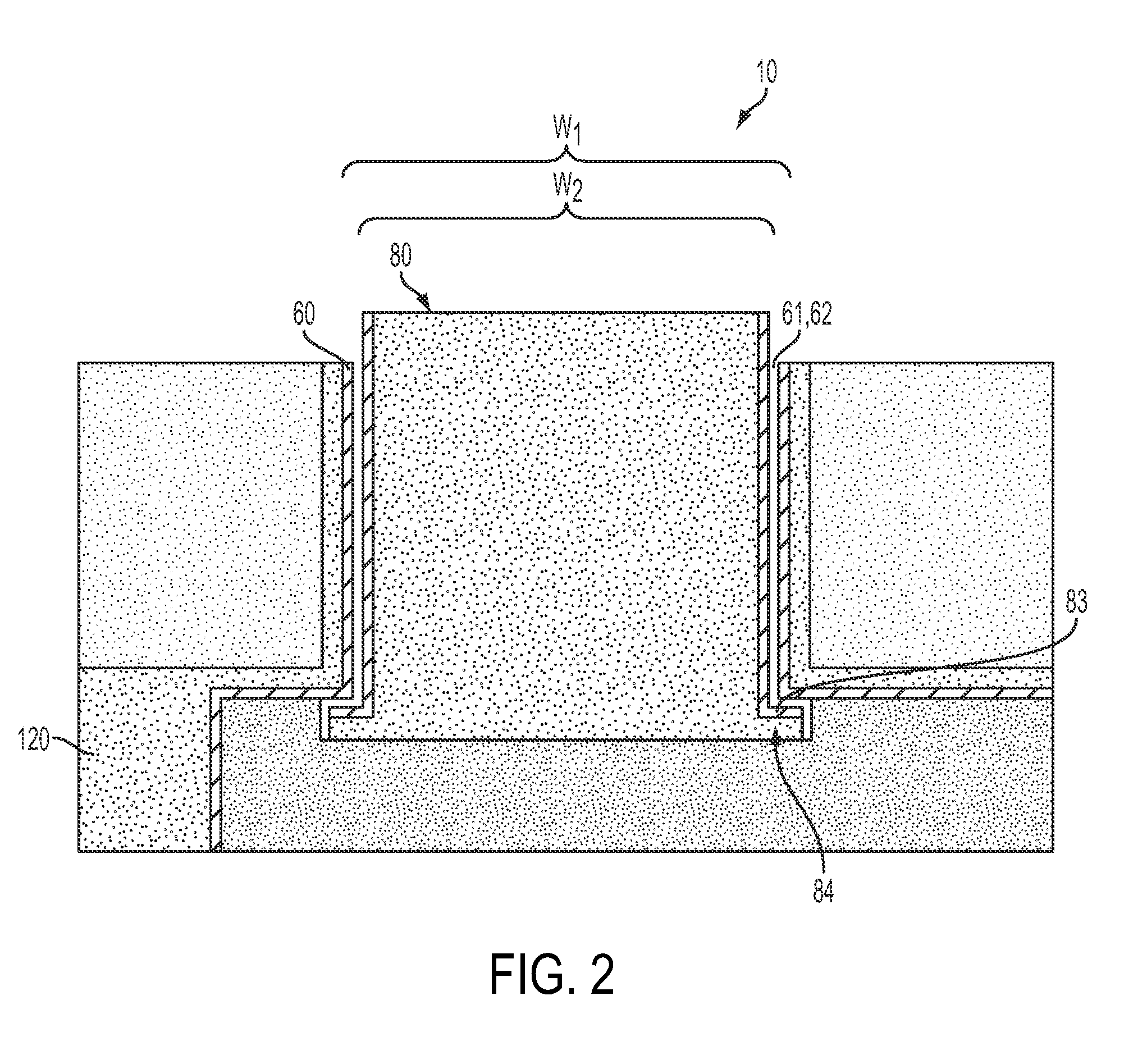Probe apparatus assembly and method
a technology of probe apparatus and assembly method, which is applied in the direction of instruments, measurement devices, connections, etc., can solve the problems of not being able to extend to 50 microns or less, their individual components become increasingly small, and are incompatible with many modern devices
- Summary
- Abstract
- Description
- Claims
- Application Information
AI Technical Summary
Benefits of technology
Problems solved by technology
Method used
Image
Examples
Embodiment Construction
[0016]The use of through-silicon-vias (TSV) and other micro-electro-mechanical system (MEMS) technologies makes possible a microplunger testing probe apparatus for use with a device having a desired and, in many cases, small (e.g., less than 50 microns) device contact pitch that is also relatively compliant. This type of structure could be attached to a test board for both regular testing functions and loopback functionality and could be incorporated into a socket for product application to thereby allow the device to be removed and reinserted without reflow.
[0017]With reference to FIG. 1, a probe apparatus 10 is provided and includes a probe layer 20 formed with a through-hole 30 extending between first and second opposing surfaces 40 and 50. A conductor 60 is disposed on and insulated from a sidewall 31 of the through-hole 30. The conductor 60 is electrically coupled to test equipment 70 mounted on a substrate 71. A probe 80 is disposed within the through-hole 30 to be normally sp...
PUM
| Property | Measurement | Unit |
|---|---|---|
| external force | aaaaa | aaaaa |
| conductive | aaaaa | aaaaa |
| elastomeric | aaaaa | aaaaa |
Abstract
Description
Claims
Application Information
 Login to View More
Login to View More - R&D
- Intellectual Property
- Life Sciences
- Materials
- Tech Scout
- Unparalleled Data Quality
- Higher Quality Content
- 60% Fewer Hallucinations
Browse by: Latest US Patents, China's latest patents, Technical Efficacy Thesaurus, Application Domain, Technology Topic, Popular Technical Reports.
© 2025 PatSnap. All rights reserved.Legal|Privacy policy|Modern Slavery Act Transparency Statement|Sitemap|About US| Contact US: help@patsnap.com



